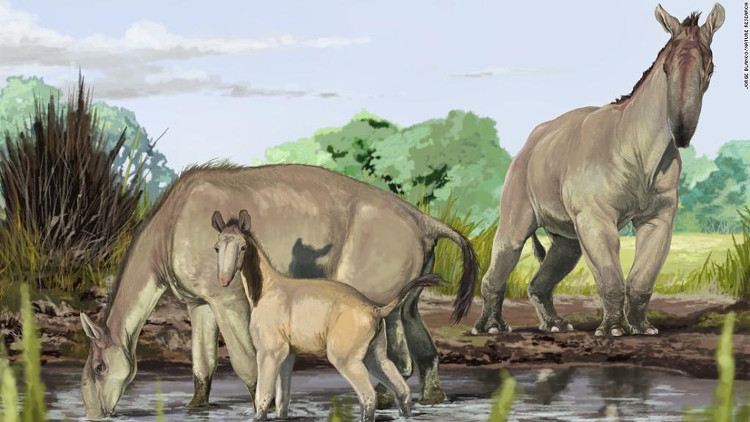The animal that used to be the father of evolution became confused
The animal that possessed the characteristics of many species that once had Charles Darwin's head was identified by the scientific community on the evolutionary tree.
Scientists in the new study, published in the journal Nature Communications, have identified the location of an evolutionary mysterious extinct plant about 12,000 years ago, CNN reported.
This herbivore named Macrauchenia patachonica lives in the last ice age in what is today South America. They possess the characteristics of many other species, such as long necks like llamas, three-legged legs like rhino feet and short taps like tapirs. They are thought to have rhino-like bodies, hippopotamus-like heads.

Species of Macrauchenia patachonica live in extinct South America 12,000 years ago.(Graphic: Jorge Blanco).
Based on this species' collagen utilization study in 2015, Ross MacPhee and Michi Hofreiter led the team to analyze mitochondrial DNA from a Macrauchenia fossil found in South America and restore the genome of animals by a new approach even without close species.
By this method, scientists ranked Macrauchenia into a group of cousins of Perissodactyla odd clam animals , including horses, rhinos, and tapirs. The two groups split about 66 million years ago, around the time of the great extinction when an asteroid hit the Earth.
"The distinctive feature of the animal is the nose. We do not have soft tissue fossils, so it is not known whether its nose develops into a hose like an elephant or a tissue like a tapir. Things are alive today, " MacPhee said. "The head of Macrauchenia's nasal cavity is between two eye sockets instead of teeth."
"Now that we have identified the position of this species on the evolutionary tree, we can explain more about their evolutionary characteristics," Hofreiter said. According to the researchers, filling gaps in the evolutionary tree helps people understand the history of life on Earth.
The fossil of this species was first discovered by Charles Darwin in 1834 before being transferred to British paleontologist Richard Owen. Despite being the father of evolutionary theory, Darwin was confused and did not know where to put this animal on the evolutionary tree because it possessed the characteristics of many different species.
- Learn the origin and meaning of Father's Day 2018
- Great fathers in the animal world
- The best fathers in the world
- A new perspective on animal evolution
- The evolution of animals does not keep pace with extinction
- Science just proves: The child who is like a father is a great blessing
- Cherry blossom father, son also love
- Cruel truth: For every 1 in 10 Britons, it is unclear who his father is
- Clarify the evolution of underwater animals to the surface
- Unbelievable stories about father theory of evolution
- Orangutan father, adopted child ... lion
- To be happier, talk to your father
 Discovered an ancient centipede fossil 99 million years old
Discovered an ancient centipede fossil 99 million years old Discovered bat-like dinosaurs in China
Discovered bat-like dinosaurs in China Discovered a 200-year-old bronze cannon of the coast
Discovered a 200-year-old bronze cannon of the coast Discover 305 million-year-old spider fossils
Discover 305 million-year-old spider fossils